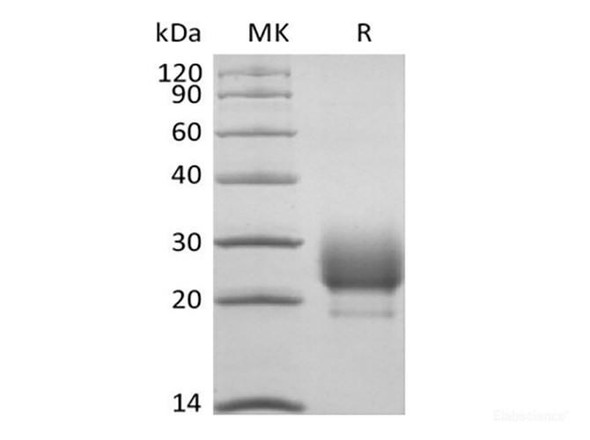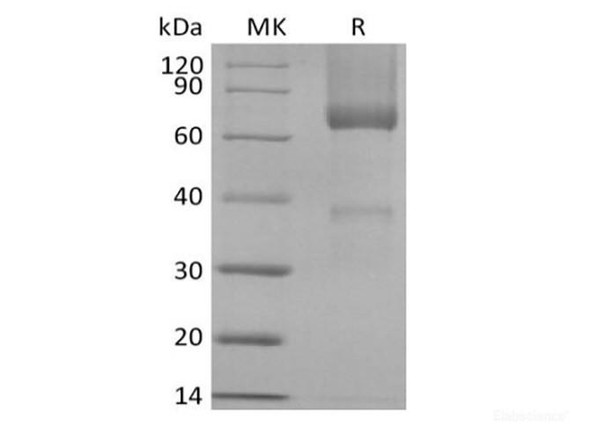Description
| Product Name: | Recombinant Rhesus Macaque SLAM Family Member 7/SLAMF7/CD319/CRACC (C-6His) |
| Product Code: | RPES6780 |
| Size: | 10µg |
| Species: | Rhesus Macaque |
| Expression Host: | HEK293 Cells |
| Synonyms: | SLAM Family Member 7, CD2 Subset 1, CD2-Like Receptor-Activating Cytotoxic Cells, CRACC, Membrane Protein FOAP-12, Novel Ly9, Protein 19A, CD319, SLAMF7, CS1 |
| Mol Mass: | 23.3 kDa |
| AP Mol Mass: | 30-50 kDa |
| Tag: | C-6His |
| Purity: | > 95 % as determined by reducing SDS-PAGE. |
| Endotoxin Level: | < 1.0 EU per μg of the protein as determined by the LAL method. |
| Bio Activity: | Testing in progress |
| Sequence: | Ser23-Met226 |
| Accession: | F7HQ72 |
| Storage: | Generally, lyophilized proteins are stable for up to 12 months when stored at -20 to -80°C. Reconstituted protein solution can be stored at 4-8°C for 2-7 days. Aliquots of reconstituted samples are stable at < -20°C for 3 months. |
| Shipping: | This product is provided as lyophilized powder which is shipped with ice packs. |
| Formulation: | Lyophilized from a 0.2 μm filtered solution of PBS, pH 7.4. Normally 5 % - 8 % trehalose, mannitol and 0.01% Tween80 are added as protectants before lyophilization. Please refer to the specific buffer information in the printed manual. |
| Reconstitution: | Please refer to the printed manual for detailed information. |
| Background: | SLAMF7 is a single-pass type I membrane protein and contains 1 Ig-like C2-type (immunoglobulin-like) domain. SLAMF7 is expressed in NK cells, activated B-cells, NK-cell line but not in promyelocytic, B-cell lines, or T-cell lines. Although the cytoplasmic domain of CS1 contains immunoreceptor tyrosine-based switch motifs (ITSM), which enables to recruite signaling lymphocyte activation molecule (SLAM)-associated protein (SAP/SH2D1A), it activates NK cells in the absence of a functional SAP. SLAMF7 positively regulated natural killer cell functions by a mechanism dependent on the adaptor EAT-2 but not the related adaptor SAP. However, in the absence of EAT-2, CRACC potently inhibited natural killer cell function. It was also inhibitory in T cells, which are typically devoid of EAT-2. Thus, SLAMF7 can exert activating or inhibitory influences on cells of the immune system depending on cellular context and the availability of effector proteins. |






